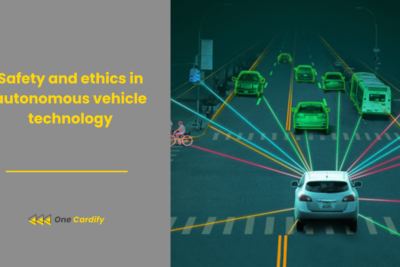
The potential of nanotechnology in diagnostics
The potential of nanotechnology in improving diagnosis paths is huge and diverse. This advanced area provides unmatched precision, productivity, and sensitivity in the detection of various medical issues.The integration of nanoscale materials and devices in diagnosis, provides the clinicians with better information on diseases at an earlier stage, thereby, enhancing the treatment and outcome.This blog explores in detail the ways nanotechnology is transforming the diagnostic industry, both in terms of the latter’s current uses and future prospects.
The Revolution of Nanoscale Technologies in Medical Diagnostics
In the centre of this technological breakthrough is a capability to manipulate materials at an atomic or molecular level, which results in diagnostic tools of unprecedented sensitivity and specificity. For instance, nanoparticles can be designed to attach to particular biomolecules and consequently they are very efficient for disease detection with a very low rate of false positive.In addition, nanotechnology allows the development of miniaturized diagnostic devices, or “labs on a chip,” that can undertake intricate analyses rapidly and with a small sample volume.It further speeds up the diagnostic system and makes it more affordable by lowering costs.
Related content
Related content
Current Applications in Diagnostics
In cancer, infectious and genetic disorder detection nanotechnology is already presents itself as a powerful tool.Nanoparticles can be engineered to deliver and localize in cancer cells, facilitating their detection in imaging modalities.In the field of infectious diseases, nano-based tests have been created that accelerate the pathogen detection and are more accurate than the conventional methods.Moreover, nanotechnology has some important applications in personalized medicine, providing instruments for more accurate genetic testing and monitoring of the disease development.
Overcoming Challenges in Diagnosis
All the limitations of the present diagnostic ways are resolved through nanotechnology: early diagnosing facilities, disease progression and treatment effect monitoring.Using explicit molecular level data, nano-based diagnostics are capable of detecting diseases long before they manifest in symptoms.This early intervention function is particularly very important for conditions such as cancer, where early detection largely affects the success rate of treatment.In addition, nanotechnology enables non-invasive or minimally invasive diagnostics, which decreases patient discomfort and hazard.
The Future of Diagnosis With Nanotechnology
Further development of nanotechnology will allow in the future to create more original diagnostic methods.The emerging trends include the smart nanoparticles that can travel through the body and diagnose and even treat diseases at their roots.Another attractive possibility is the combination of artificial intelligence with nano-diagnostic techniques that will improve the accuracy and prognostic value of diagnostic tests.Advancing research provides us with expectations of refined diagnostic tools that are based on nano with increased sensitivity and specificity.
FAQ
By manipulating materials on a nanoscale, diagnostic tools can target and identify disease markers with unprecedented precision, leading to more accurate and early detection of various conditions.
Yes, there are several applications of nanotechnology in diagnostics currently in use, especially in the detection of cancers, infectious diseases, and genetic disorders. These methods are renowned for their sensitivity and specificity.
"Lab on a chip" refers to miniaturized devices that integrate one or several laboratory functions on a single chip, enabling complex analyses to be performed quickly and with minimal sample volume.
Absolutely. By reducing the size and cost of diagnostic devices, nanotechnology can make advanced diagnostic tests more accessible to a broader range of healthcare settings, including resource-limited areas.
Future developments may include smart nanoparticles for more targeted disease detection, integration with AI for enhanced diagnostic accuracy, and further miniaturization of diagnostic devices.
Nanotechnology allows for the detection of diseases at a molecular level, often long before any symptoms appear, enabling early intervention and significantly improving treatment outcomes.
While research is ongoing regarding the long-term effects of nanomaterials, current nano-based diagnostic tools have passed rigorous safety tests and are considered safe for clinical use.
The Unveiling Future of Medical Diagnostics
Nanotechnology in diagnostic procedures marks a new age of medicine that is associated with unimaginable levels of precision, efficiency, and patient comfort.In the current progression of science, these nano-tools are ready to become the core of diagnostic processes altering the way diseases are diagnosed, controlled and treated.The many application and future development possibilities of the nanotechnologies, makes it clear that they are the cornerstone of the new wave of improvements in the field of medical diagnostics.The future of medicine is getting more beautiful and promising as we are exploring the possibilities of these microscopic miracles.






Related Posts